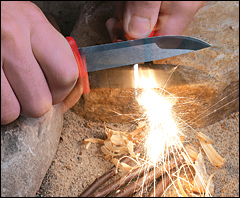A man poles his canoe off the coast of Zanzibar.
This photo is was taken by Flickr user blhphotography and licensed under Creative Commons. Want to see your photo here? Send to [email protected] with subject line Daily Photo.
A man poles his canoe off the coast of Zanzibar.
This photo is was taken by Flickr user blhphotography and licensed under Creative Commons. Want to see your photo here? Send to [email protected] with subject line Daily Photo.
The loop lunar orbit is an awesome aerial hole combo that is sure to get you more chicks than a Nickelback concert. The beauty of it is that once you have it dialed, you can cartwheel into a mcnasty, and then keep adding more moves to infinity.
1. Start by plugging your bow for the loop.
2. Stand up tall and jump forward. The higher you go and farther upstream you jump, the better because the lunar orbit will pull you downstream.
3. Throw your body forward and pull back on your paddle blade. This launches your bow around over your head. Using only one blade to pull the loop stroke is key; this will set you up for the combo.
4. From here, you actually want to land on your stern, rather than finishing all the way flat on your hull.
5. When you are vertical on your stern with your paddle behind you from pulling the loop stroke, quickly use that same paddle blade for a reverse stroke. This is the stern pry that initiates the lunar orbit.
6. The farther back your paddle blade when you push, the more vertical your boat will go. Keep your paddle blade in the water the entire time or you will fall over on your head.
7. Finish the reverse stroke and turn it into a forward draw to pull yourself around vertically.
8. Lean forward as you turn your forward draw back into a reverse stroke for your bow smash.
This article originally appeared in Rapid, Early Summer 2011. Download our free iPad/iPhone/iPod Touch App or Android App or read it here.
A look at the Swedish FireKnife from Adventure Kayak magazine.
Swedish FireKnife
Never be without heat. This sturdy, super sharp knife stores a 3,000-strike FireSteel fire-starter in the handle. Draw the back of the blade down the FireSteel and watch the sparks fly in even the foulest weather.

$32.50 | www.lightmyfire.com
To read about more survival essentials in the Early Summer 2013 issue of Adventure Kayak, click here.
In this amazing video, talented (and brave) Zegul Kayaks rep Andres ‘paddles’ through the snowy steeps of a medieval European village. “We wanted to put our kayaks to extreme testing and since it was still winter in Estonia, we did our kayaking on snowy city streets,” says Risto Pårtin of Tahe Outdoors, makers of Zegul. “Right there between the traffic, down the stairs, in the medieval old town and so on. We wouldn’t recommend trying this yourself!”
Learn more about Zegul Kayaks at www.zegulmarine.com and check out Adventure Kayak’s review of the playful Zegul 520 touring kayak in the Early Summer issue here.
Georgian Bay’s Franklin Island is a popular summer weekend getaway for kayakers escaping the city. Here’s looking forward to the next three months of warm breezes, hot sunshine, balmy nights, campfires, swimming, camping and paddling. What could be better?
Want to see your photo here? Send to [email protected] with subject line Daily Photo.
“Everyone must believe in something. I believe I’ll go canoeing.” — Henry David Thoreau
This photo is was taken by Flickr user Bluenose Canoehead and licensed under Creative Commons. Want to see your photo here? Send to [email protected] with subject line Daily Photo.
The Ocoee rides again. Proclaimed one of the best solo whitewater open boats of all time, the Ocoee was re-released this February by Nova Craft Canoe.
Designed by the late Frankie Hubbard and Dagger in 1996, this remarkable recreational open boat was the first to transition from a shallow arch hull to a flatter bottom—the Ocoee had hard edges in a world where rounder, softer edges were the norm. When Dagger got out of the open boat market six years ago, Bell Canoe works picked up the mould, only to cease production four years later. The Ocoee’s absence from the market has been keenly felt since.
“The Ocoee has a cult following,” says Joe Pulliam, co-founder of Dagger. “To this day it’s considered one of the benchmarks in high-performance, whitewater solo boating.”
Famed for its high waterline, hard chines and extreme rocker, the Ocoee has been embraced by aggressive paddlers, and made a meal of out more than a few beginners. It’s been used for everything from winning rodeos to class V creeking. Voted the best open boat of all time in 2012 by readers of Rapid magazine, the fact that the Ocoee is easily customized and a favorite of instructors has further boosted its popularity.
“This is big news for open boating,” says Emma Stinson, a whitewater canoe instructor and one of almost 50 paddlers to pre-order an Ocoee. The re-launch news ended Stinson’s four-year hunt…
Finish reading this article in the Spring 2013 issue of Rapid. Download our free iPad/iPhone/iPod Touch App or Android App or read the rest here.
Were you at round two of the North Fork Championship this weekend? If not, you missed out!
This photo was taken by John Webster. See more of his work at www.webstermediahouse.com.
Think your image could be a Rapid Media Whitewater Daily Photo? Submit it to [email protected].